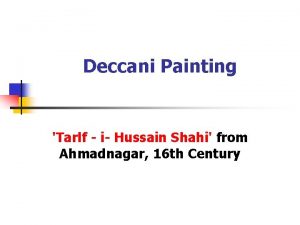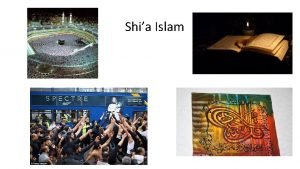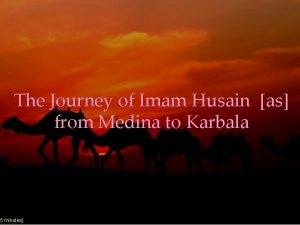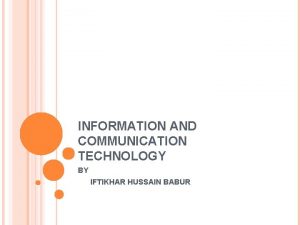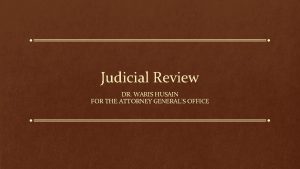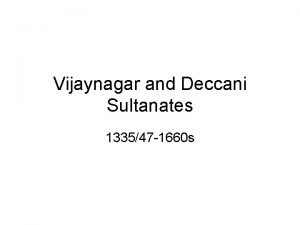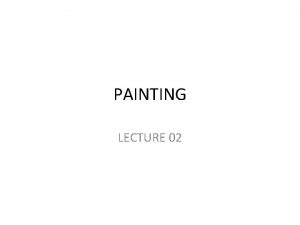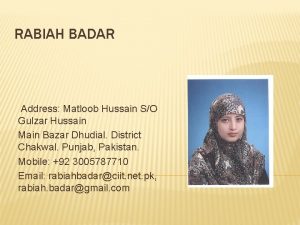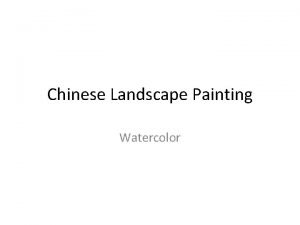Deccani Painting Tarlf i Hussain Shahi from Ahmadnagar













- Slides: 13

Deccani Painting 'Tarlf - i- Hussain Shahi' from Ahmadnagar, 16 th Century

Indian Painting B. A. II Dr. O. P. Parameswaran, Assistant Professor, Department of Fine Arts, Post Graduate Govt. College for Girls, Sector-11, Chandigarh.




n n While Mughal painting was developing under Akbar, in the second half of the 16 th century, the art form was evolving independently in the Islamic kingdoms of the Deccan. In 1526 the Muslim courts of Ahmednagar, Bijapur and Golconda emerged as the dominant powers in the south.

n There they became the effete and quarrelsome neighbours of the Hindu Kingdom of Vijaynagar-1 n 1565 they united briefly and destroyed' the rich capital of Vijaynagar, but the alliance at once dissolved and the three returned to their languid and introverted ways.

n n The conquerors absorbed many cultural traits of their Hindu enemies and recruited local craftsmen with sound background of medieval art styles of southern India. Passing through phases of sudden maturation and prolonged stagnation, the schools of Deccani painting flourished in the 16 th & 17 th centuries but gradually withered away in the 18 th & 19 th centuries.

n n A multiracial society consisting of Indian Muslims, Hindus, Turks, Persians, Arabs and African shaped the contemporary pictorial idiom that has been likened to an impossible, fantastic mood of a mirage. Pre Mughal styles of painting as well as Persian, Turkish and even European traditions acted as catalysts to the flowering of miniature painting in the centers of Ahmednagar, Bijapur, Golconda and Hyderabad.

n n The evolution of the Deccani painting styles and their exact origin are still the subject of scholarly investigation. Tarif-i- Hussain Shahi: It is generally accepted that the earliest known Deccani miniature paintings are those illustrating the Persian style epic Tarif - i-Hussain Shahi, which is a poetic account of Ahmednagar ruler Husayan Nizam Shah I (ruled 1553 - 65) and was commissioned by his queen when she served as regent , C. 1565 -9.

n n The Ladies represented in it belong to Northern traditions, of Pre Mughal painting which was flowering in Malwa, and probably also Ahmedabad, in the mid 16 th century. The Ladies of Ahmednagar wear a modified northern costume with choli (bodice) and long pigtails braided and ending in a tassel.

n n Only the very long scarf passing round the body below the hips is a southern fashion; to be seen in the Lepakshi frescoes. The palette is certainly different from that of known northern manuscript, much richer and more brilliant; but these may well have been characteristics of painting in the Deccan long before Talikota

n The high horizon and gold sky can certainly be derived from Persian example, and we shall see the debt of all the Deccan Kingdoms to Persian for their landscape idiom. This is understandable in vein of their close political and economic ties with that country.
